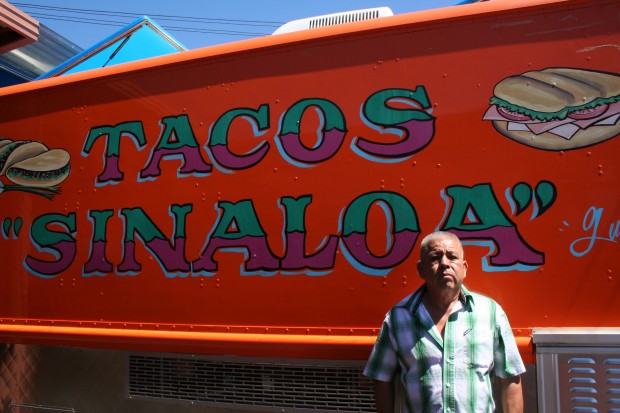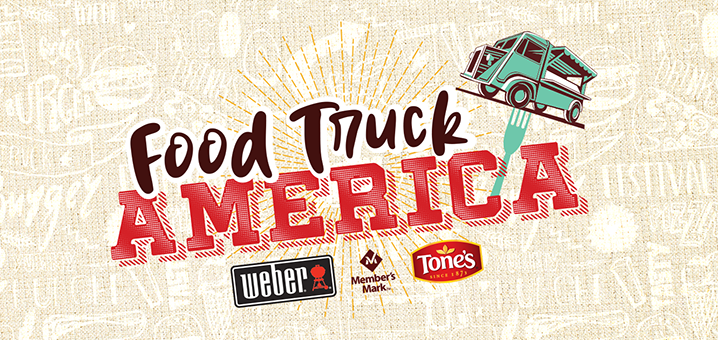While cities around the country are embracing mobile food vendors, Oakland still treats most of them as scofflaws.
OAKLAND, CA – Hearing Room 3 at Oakland City Hall has windows that look out onto skateboarders and office workers headed for BART, but on this Wednesday afternoon — the last day of August — it seems oddly cut off from the street. That’s ironic, given the purpose of today’s meeting, called by the strategic planning wing of the city’s Community and Economic Development Agency. That’s because the proposals that come out of this room in a little more than two hours from now have the potential to change Oakland residents’ relationship to the street for a long, long time.
It was more than two years ago that the city council directed the agency to look at Oakland’s 2001 mobile vending ordinance and recommend changes. Today’s meeting of more than a dozen people — Oakland administrators, leaders of business improvement districts, event organizers, even a couple of food truck owners — caps months of inquiries, hearings, studies, and reports. And, as another summer sets on Oakland’s restrictive mobile vending rules, not a single reform has been implemented.
That has Elizabeth August, seated at the U-shaped configuration of tables in Hearing Room 3, visibly pissed off. Organizer of the Oakland Mobile Food Group and a food vendor herself, August is among the “key stakeholders” (according to Ed Manasse, the strategic planning office’s project manager, the wonk tasked with gathering information and making recommendations to the city council) in the slow crawl toward reform. Mild-mannered and patient, Manasse looks like the kind of guy who’d be coaching his daughter’s soccer team and never raise his voice. That’s in contrast to the perennially vocal, always excitable August, only today she’s silent, arms crossed, head down, holding her fire.
“Bless Ed Manasse,” August told me a week earlier, at the end of an exhausting, ultimately pointless day spent trying to convince city officials to endorse a trial food-truck pod for city parks. “But it’s not going anywhere.”
It is, however, going everywhere across the country. While Oakland has been dithering over street-food reform, food trucks nationwide have blown up as big as eighteen-wheelers: Glossy magazines hail Portland’s food-pod paradise; the Food Network has turned them into reality TV via The Great Food Truck Race; even the porn industry is on board. Earlier this year, an adult film producer used LA’s Flying Pig truck as the set for a porno depicting a crew of young women who, uh, found success after bringing their tacos to the street. It marked food trucks turning a major corner in American life, from gritty urban necessity to cultural inevitability.
Neighboring cities are also far ahead of Oakland in adjusting to this new reality. Across the bay, Matt Cohen, an aspiring street-food vendor, became a consultant for other aspiring mobile vendors, and then convinced the cash-strapped Rec and Park Department to let him launch a few weekly food-truck pods called Off the Grid in city parks. They were so successful it convinced the San Francisco Board of Supervisors in early 2010 to rewrite SF’s mobile vending ordinance, opening up every city neighborhood to potential vendors and taking permitting authority out of the hands of police and giving it to the Department of Public Works — a gesture signaling that street food was no longer a law-enforcement issue, but a civic amenity.
Emeryville’s 1981 mobile vending ordinance put few restrictions on truck vendors. And then when a new crop of trucks started appearing on city streets to cater to office workers at lunch, the city assembled an advisory board of truck proprietors, brick-and-mortar restaurant owners, public officials, and citizens to recommend changes that would protect restaurants without outlawing trucks. In part, the new law clarified distance requirements between food trucks and restaurants, and from one truck to another. Participants — including food truck owner Gail Lillian — said the process was a model of civility and good governance.
But, Oakland, once a pioneer in the fast-growing world of street food, still treats most mobile vendors as if they’re scofflaws. Even though food trucks are common in the city, most are operating illegally.
And today’s meeting in Hearing Room 3 represents yet another sad turn for Oakland. It would be one thing if the city’s ambivalence were only a matter of missing some small window for the zeitgeist to slip through. But its failure to accommodate legal street food outside the current lonchera zone in Fruitvale has had the effect of thwarting entrepreneurship for hard-working citizens with limited access to capital, the very small-business startups Oakland’s city leaders pay lip service to. It’s not just sad. It’s tragic.
Tragic because of street food’s potential to make cities more livable. In the spring and summer of 2009, it was clear that there was something happening in San Francisco, as a small group of home-based cooks took first to Twitter, then to the streets of the Mission with carts or folding tables, selling food that ranged from chai to Filipino adobo.
The events that summer felt more like parties than food festivals, and since many vendors were anxious about potential police shutdowns, they also had a whiff of underground. The weekly gatherings also managed to achieve that most cliché of progressive urban goals: They built community. People who’d never eaten on the street before, who weren’t in the habit of lonchera-grazing in Fruitvale, or taking a chance — even drunk — on a late-night bacon-wrapped hot dog seared on a battered baking sheet over propane, were suddenly experiencing urban outdoor space in a new way.
Find the entire article from the East Bay Express <here>




